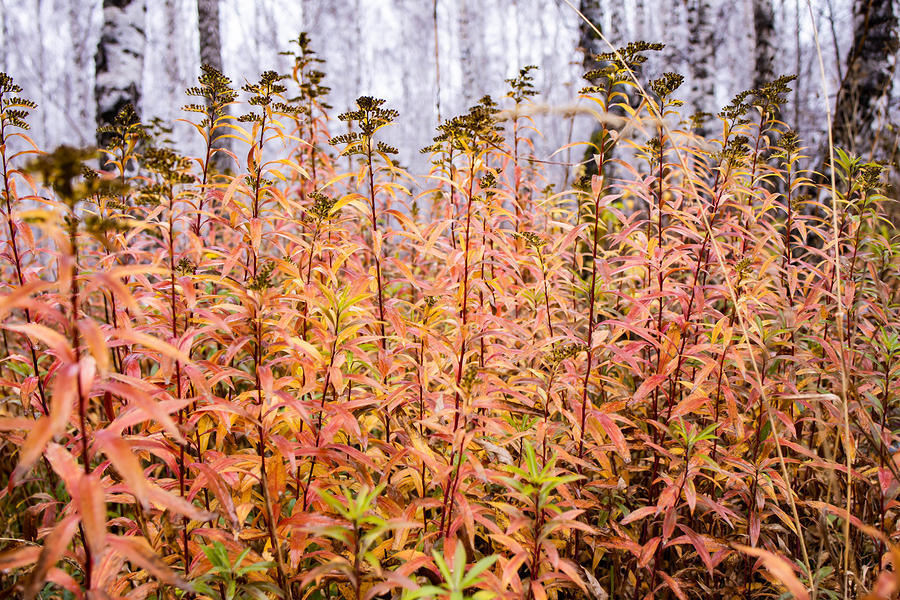Bay plants also known as bay laurel or sweet bay are versatile evergreen shrubs or small trees that are popular for both their culinary and ornamental uses. Their aromatic leaves are a staple seasoning in many cuisines. The attractive, dense foliage also makes them ideal for topiaries, hedges, standards, and container plants.
If you’re considering adding a bay plant to your garden or landscape, you may be wondering just how tall it can grow. The maximum height depends on several key factors.

Genetics – The Variety Matters
Bay plants encompass a few different species each with distinct characteristics. The most common is the Mediterranean bay laurel (Laurus nobilis), which is the type typically used for cooking. In ideal conditions this variety can reach up to 30 feet (9 meters) tall. Other varieties include
- California bay laurel (Umbellularia californica) – up to 80 feet (24 meters)
- Willow-leaved bay laurel (Laurus nobilis ‘Angustifolia’) – up to 20 feet (6 meters)
- Golden-leaved bay laurel (Laurus nobilis ‘Aurea’) – up to 10 feet (3 meters)
So the genetic characteristics of the specific variety you choose will factor into the maximum potential height. Compact and dwarf varieties are available for gardeners wanting a smaller bay plant.
Growth Habit and Growing Conditions
In addition to variety, the overall growth habit and growing conditions impact height. Bay plants are generally hardy to USDA zone 8. They prefer full sun but also tolerate partial shade. Well-draining, slightly acidic soil is optimal. Container-grown plants will be smaller than those planted in the ground.
Bay laurels grow relatively slowly. It can take 10 years or more for a plant to reach its mature height potential. Providing ideal growing conditions gives it the best chance of maximum growth. Insufficient sunlight, poor drainage, or inadequate water are common limiting factors.
Climate and Location
Your local climate will affect a bay plant’s growth. In zone 8 and warmer, with mild winters, bay laurels can thrive and achieve taller heights. Colder climates increase the risk of winter damage and slow growth. Young plants need protection when temperatures drop below 15°F (-9°C). Mature plants can withstand brief cold snaps down to 5°F (-15°C).
Wind exposure is another consideration. Bay plants tolerate gentle coastal winds but grow poorly when constantly battered by harsh, dry winds. Sheltered locations assist growth. In marginal climates, situating the plant on the south or east side of a wall provides insulation.
Pruning Regime
Frequent, proper pruning is key to managing height and shape. For topiaries and formal hedges, pruning 2-3 times per year helps maintain desired dimensions. Removing about a third of the new growth is ideal and prevents excessive shearing.
Occasional corrective pruning is useful for removing winter damaged branches or wayward shoots on free-standing shrubs. However, avoid over-pruning, which creates excessive stress. A light annual trim maintains a natural shape.
Time and Patience
Bay laurels are exceptionally long-lived trees, often reaching 100 years or more. Allowing adequate time for slow, steady growth is necessary to achieve maximum height. Annual growth of just 12-24 inches is typical. Avoid the temptation to push young plants to grow too quickly.
With the proper variety, ideal growing conditions, a sheltered location, and a careful pruning regime, your bay plant can thrive for decades to come. Be patient, provide routine care, and you’ll be rewarded with a gracefully growing bay that reaches its full height potential over time.
Frequently Asked Questions
How long does it take a bay plant to reach full height?
Given ideal conditions, expect a bay plant to take approximately 10 years or longer to achieve its maximum height potential. Growth is usually quite slow—only 12-24 inches per year.
What is the best way to prune my bay plant?
For topiary shapes, prune 2-3 times during the growing season. Remove up to one-third of new growth, clipping back to just above leaf nodes. For free-standing shrubs, take a light touch, only pruning as needed to maintain shape and remove damaged branches.
Should I grow my bay plant in a container or in the ground?
Bay plants adapt well to containers with proper care. However, their growth will be more restricted than if planted in the landscape. In-ground plants can achieve taller heights. Use containers for smaller varieties or where space is limited.
How cold hardy are bay laurel plants?
Most varieties tolerate temperatures down to 5°F (-15°C) when mature. Young plants need protection below 15°F (-9°C). Sheltered locations or microclimates assist winter survival in cooler zones. Leaf or stem damage may occur before hardiness limits are reached.
What are signs my bay plant is struggling with my climate?
Indications your bay laurel is not well-suited to your climate include: slow growth, leaf scorch, leaf or branch dieback, winter damage, and susceptibility to pests/disease. Boosting insulation, drainage, irrigation, or sunlight access may help marginal climates.
Can I propagate bay plants from cuttings?
Yes, bay laurel can be propagated from semi-ripe stem cuttings in summer or softwood cuttings in spring. Take 4-6 inch cuttings, wound the bottom, dip in rooting hormone, and place in moist potting soil. Maintain humidity and warmth, and roots should form within 6-8 weeks.
Final Tips
- Select an appropriate variety for your space constraints
- Allow ample time for slow growth to mature height
- Prune judiciously to direct growth
- Shelter from wind and cold to prevent damage
- Meet water, light, drainage needs for your climate
- Propagate from cuttings to replicate a perfect plant
With its legendary longevity, the venerable bay plant can become a staple in your garden for generations to come. Anticipate gradual growth to maximize its potential height over time. With a little patience and proper care, you’ll be rewarded with a beautiful, aromatic bay addition.
